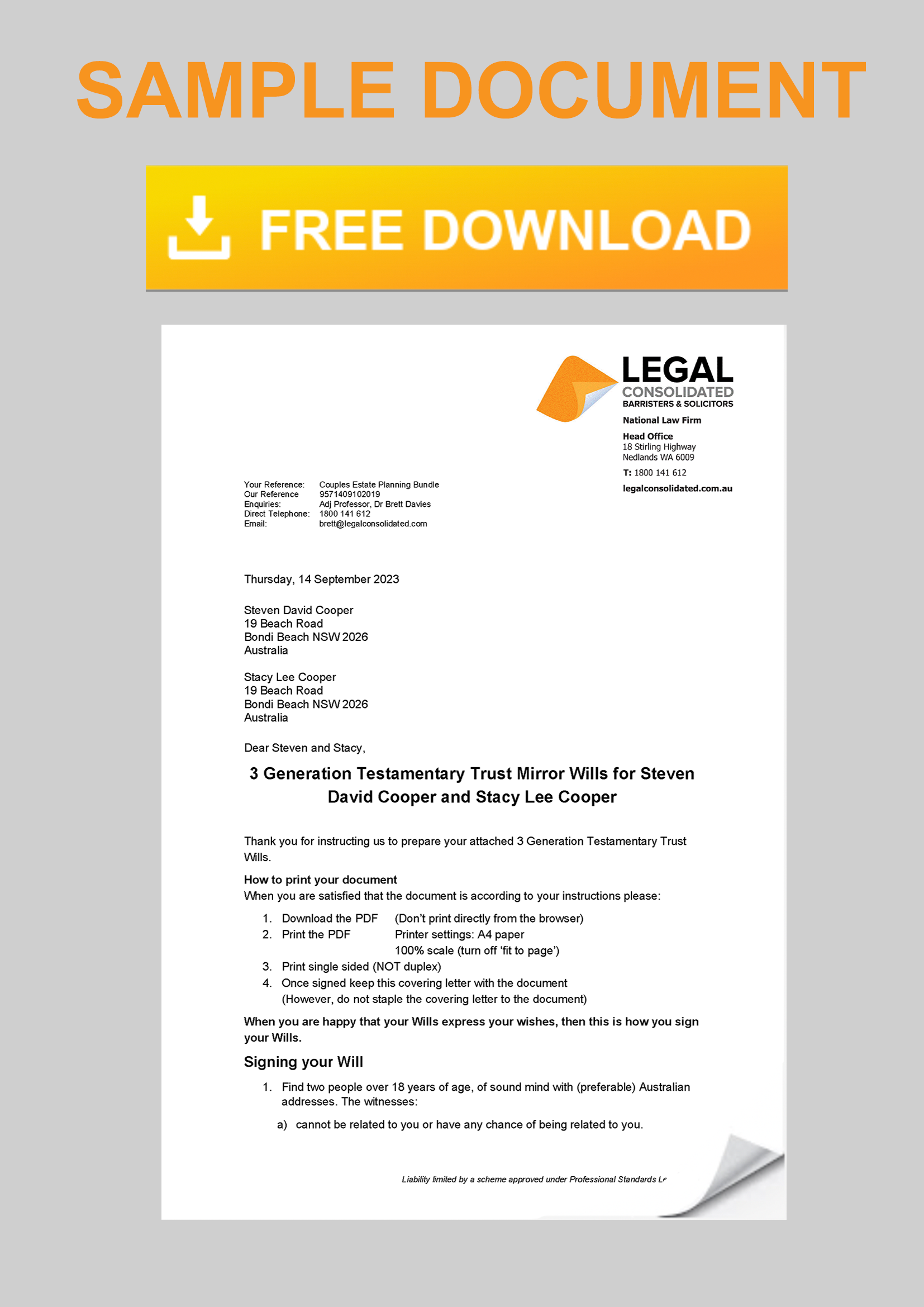

Australian companies created before 1 July 1998 had a ‘Memorandum & Articles of Association’ (Memo & Articles). Since then all newly incorporated companies should have a Constitution. Both Memo & Articles and Constitutions guide directors on how the company conducts itself.

Your old Memorandum & Articles of Association may still operate. But not well. Faults with the old Memo & Articles:
Requiring an Annual General Meeting (AGM). However, the law no longer requires an AGM for Pty Ltd companies. No one has AGMs anymore. But if you don’t then your company is non-compliant. This is for both taxation and insolvency laws. Your new Constitution ensures that you do not have to have AGMs anymore.
The Memo & Articles contain a ‘list of objects’. This is the purpose of the company. E.g. ‘sell fishing tackle and retail’. What if your company now does something else, such as acting as a trustee of a doctor’s surgery? Then you break the law. Your company is acting ‘ultra vires’. It is acting outside its powers. Again, your company is non-compliant. Legal Consolidated’s Constitution allows you to do anything a human can do – and more Your company is no longer restricted in what it can and can not do.
Memos & Articles require two directors. As stated above, the laws changed. You now only need one director. It is safer to only have one director in case the company goes insolvent Good asset protection requires one director – not two.

Old Memo & Articles require strange and sometimes illegal behaviour. Instead, update the company constitution to allow these correct powers:
Be safe. Update to a Legal Consolidated Barristers & Solicitors’ Constitution
You are about to replace your old Memo & Articles with a Company Constitution on our law firm’s website. You are building everything you need including:
See a full sample of the cover letter, minutes and new Constitution above.
You are welcome to add your logo to our law firm’s documents for free.
Do not send a copy of the new Constitution to ASIC. There are also no ASIC fees. This is when you replace your old Memorandum and Articles with a Legal Consolidated Constitution.
As we have drafted the update, each shareholder signs to give their consent. If you can’t get every shareholder to sign please telephone us. If the shareholder is dead their executor signs the Minutes, instead.
The Constitution is a contract between the company, directors and shareholders (members). It is not mandatory to create a Constitution. Your internal procedures are, instead, governed by government Replaceable Rules. However, no accountants, lawyers or financial advisers would advise your company to rely on these Replaceable Rules. This is because Replaceable Rules are not tailored to your specific needs. Relying on Replaceable Rules is dangerous.
Your company must have a set of rules. The rules are either:
We often review a company incorporated on a non-law firm’s website. To ‘save time’ the non-law firm website adopts Replacement Rules for:
However, both of these companies must have a Constitution. Further, the Replaceable Rules are the bare minimum. There are additional powers that a company should have – our Constitution contains these additional powers and benefits. Also, the Replaceable Rules change at the whim of the current government. While the changes may benefit ‘society’ they may not be in the best interests of the shareholders. In contrast, constitutions can be amended at any time by the Members, just as you are about to do.
The Constitution you are building updates your company’s internal rules and procedures. Your old Memorandum and Articles of Association set out the internal rules. Now your new Constitution does that job. Your new Constitution fully complies with changes to the Corporations Act. The 8 improvements are:
Technology has changed how a board can communicate with itself, employees and shareholders. When you replace a Company Constitution it is updated to reflect how changes in technology affect your business operations. Traditionally board decisions are mailed out in physical form to shareholders. However, email is a faster form of communication that is used by many businesses to correspond with shareholders. Your updated constitution takes into consideration how instantaneous communication affects your shareholders. Further, your constitution outlines how technology can be used in meetings.
In 2010, the Australian government amended section 254 of the Corporations Act. This section governs how dividends are paid.
Before 2010 the Corporations Act stated that dividends could only be paid from company profits. However, after 2010 a company is not allowed to declare a dividend unless:
Under an old constitution, you may not have been able to pay dividends legally. Insolvency specialists pursue this argument. They challenge all dividends that you have paid since 2010.
Shareholders can cast a vote regarding a meeting. Do it either online or through personalised voting forms. Members do not need to attend the meeting and can appoint a proxy. Your new Constitution improves meeting efficiency.
Share buybacks allow companies to buy back their shares from the shareholders. In Australia, there are 5 types of share buybacks. They are equal access, on-market, employee share scheme, selective buy-back and minimum holding. Replace a Company Constitution and ensure the legality of the share buyback.
A company has the power to issue preference shares under Australian law. Your new Constitution ensures that the preference shares are clear.

The Law Simplification Act 1995 (Cth) reduced the number of directors necessary for a company from two to one. Before then, you needed a minimum of 2 directors. This would often be a wife and a husband. The change was to allow women to start their businesses.
You now get away with just one director for your company. Most companies only have a single director.
Having two directors was a disaster for asset protection. Instead of one, both directors go bankrupt along with the insolvent company. Owe money to the ATO for PAYG or superannuation? Then all the directors are liable automatically for such unpaid debts. Better only a single director. Only one person goes down if the company is insolvent.
Asset protection is having no assets in a risky person’s name. Instead, assets are in the safe person’s name. This is called the ‘man of straw and the woman of substance’.
The new Constitution you are building allows you to have a single director.
Companies have rules. The rules are set out either in the Articles of Association or the Constitution.
We review brand-new company Constitutions incorporated on a non-law firm website. Many still require the company to have two directors!
What if your rules say two directors – but one of you wants to resign?
You may try and resign as a director. You may lodge the correct form with ASIC to resign as a director. ASIC may accept the form. But the resignation is void as against a company liquidator and a trustee in bankruptcy.
This can be rectified by updating your company rules.
Also, if a company does not have enough officers, it breaches the Corporations Act 2001. This company pays penalties and is prosecuted for not meeting its obligations:
When you replace the Company Constitution you get a Division 7A Loan Agreement. This is part of the Constitution. It is built into the Constitution. It works for each Member and any new Member.
Liability limited by a scheme approved under Professional Standards Legislation
Free online training courses:
National: 1800 141 612
Sydney: 02 8000 9192
Melbourne: 03 9067 7797
Brisbane: 07 2111 0869
Perth: 08 6389 0100

lawyer@legalconsolidated.com.au
admin@legalconsolidated.com.au
Adj Professor, Dr Brett Davies